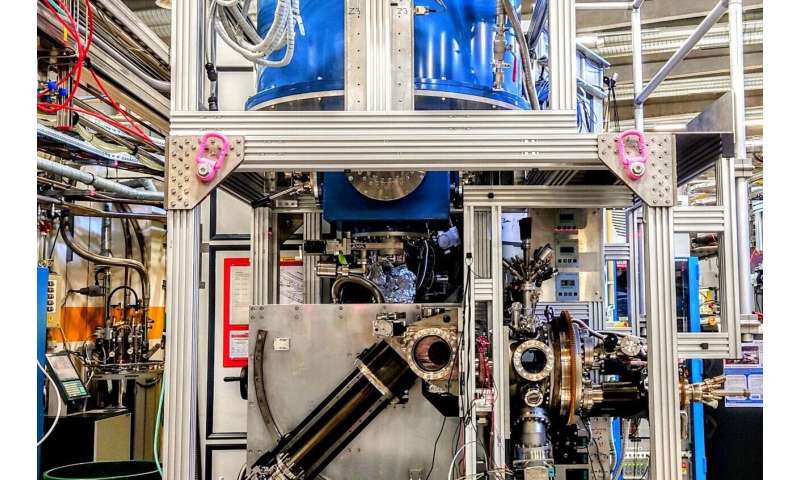The magnetic behavior of metal-free organic materials

Magnetism is a property of matter that has been known to mankind for several thousand years, long before these properties could be described in a theory. In our everyday lives, we are used to "classical magnets" made of metals or rare earth alloys, "hard materials" like the magnets that decorate our fridges.
Let's imagine a class of materials that have a magnetic moment in the complete absence of metal ions, being composed only of light elements, such as carbon, nitrogen, and oxygen. These would be transparent, light, and flexible materials. They would have lower costs of production and could be sustainably produced. This class of materials does indeed exist: it is the family of organic radicals. These radicals are organic molecules that carry an unpaired electron, resulting in a permanent magnetic moment: they are therefore materials with permanent magnetic properties, i.e., their magnetic moment is not due to the effect of an external magnetic field. Organic radicals are very promising materials for electronics and quantum technology.
To use these radicals in a device, they must be used as a film, i.e., the radical molecules cover a substrate such as SiO2, forming a coating. In the past, magnetism in purely organic radicals was known only for crystals and it was completely unknown in thin films: it was never studied before because this was a huge challenge.
My first idea to study magnetism in completely organic thin films, 1000 times thinner than human hair, dated back to 2010-2011. At that time, the experiment was not yet technically possible. My colleagues at the University of Hamburg developed a high magnetic field machine for ultracold measurements down to 0.1 K, i.e., very close to the absolute zero, and much colder than the temperature of outer space. It was necessary to work using synchrotron light, in an advanced synchrotron such as PETRA III in Hamburg (Germany) where the energy of the light can be scanned very fast in the soft X-ray region during the measurements. Our first experiment was performed in 2016 immediately after the machine was finished and checked, the first of a series of dedicated beamlines. The measurements were very time consuming, for example, it takes several days to get below 1 K and we needed to measure 100/150 scans on the materials surface, each at a new point on the sample, to get a single averaged spectrum (1 sample, 1 temperature, 1 field).
The combination of the beamline at PETRA III in Hamburg and our machine (see picture) is unique and it is the only facility in the world where it is possible to obtain this result.
We used X-ray magnetic circular dichroism (XMCD). It is an element-specific measurement technique, i.e., by using this technique it is possible to identify all the elements that form the materials. It is based on the absorption of circular polarized X-rays that leads to electronic transitions. It is a well-established method to investigate classical magnets and to identify their magnetic behavior. It was never used before on purely organic materials.
We applied a strong magnetic field at very low temperatures to align the single magnetic moments in each molecule of our radical films along the direction of the field. The absorption spectra were measured once with left circularly polarized light and once with right circularly polarized light.
It took a long time to analyze the big amount of data that we obtained. Honestly, I spent insomniac nights, trying to understand the data, sometimes in confusion and with plenty of doubts, because this is the first experiment of its kind. In the end, it was very rewarding: 1) my coworkers and I have shown that completely organic, light and transparent radical thin films have long-range magnetism, 2) their magnetic behavior can be changed depending on the film production, for example, changing the temperature of the coated substrates during coating, and 3) these results open the way to the advent of flexible, light and transparent magnets and, thus, to a variety of new futuristic applications.
This story is part of Science X Dialog, where researchers can report findings from their published research articles. Visit this page for information about ScienceX Dialog and how to participate.
More information:
Tobias Junghoefer et al, Magnetic behavior in metal-free radical thin films, Chem (2021). DOI: 10.1016/j.chempr.2021.11.021
Benedetta Casu is an experimental physicist working at the University of Tübingen in the field of organic quantum materials using soft X-ray techniques. She pioneered the research on radical thin films introducing the use of soft X-rays based techniques, such as X-ray photoelectron spectroscopy and photoemission electron microscopy with the additional use of synchrotron radiation. This brought to the elucidation of phenomena otherwise not accessible with other sources, such as the phenomena discussed in the Chem paper.